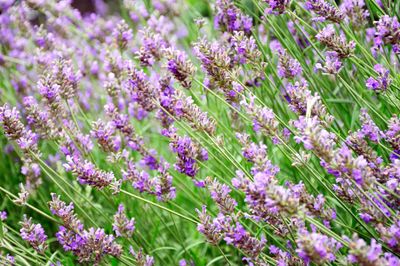What is Phenomenal Lavender?
Plant breeders have really hit a home run with (Lavandula x intermedia ‘Phenomenal’) plants. Not only are they adaptable to very cold and hot temperatures, but the plants tolerate a variety of soil conditions provided it is well draining. The biggest tip when growing Phenomenal lavender is sun. In full sun, this plant will provide no fuss beauty and scent in your garden. Phenomenal is a French lavender hybrid especially developed for winter hardiness combined with heat and humidity tolerance. Lavandula ‘Phenomenal’ plants form naturally soft mounds of silvery green foliage. The flower spikes are deeply purple-blue and heavily scented, a magnet for a variety of pollinating insects. Gardeners in deer prone areas should try growing Phenomenal lavender, which is low on these browsing animal’s menu list. This lavender is fast growing and has copious scented blooms perfect for cutting. The flowers will attract bees and butterflies as well as other beneficial insects.
How to Grow Lavender ‘Phenomenal’
Select a site in full sun when planting lavender. In partially shaded locations, the blooms will be diminished. Phenomenal is spectacular in mass plantings. Each bush can grow up to 24 inches (61 cm.) tall with a similar spread, so plan accordingly when installing them. Best results occur in gritty, well-draining soil. It thrives in low fertility soil in United States Department of Agriculture zones 6 to 9. Plant in spring and summer in zones below USDA 6, and in fall in warmer regions. If soil is alkaline, incorporate lime several weeks prior to planting. Use Phenomenal lavender in borders, rockeries, low hedges, kitchen and formal English knot gardens.
Phenomenal Lavender Care
Phenomenal has high resistance to root rot and other fungal diseases. Alfalfa mosaic virus is a common disease which is spread by aphids. Other pests to watch for are whiteflies, leafhoppers and spittlebugs. During the hottest months of the year, keep soil moderately moist. Prevent weeds around the planting zone and use mulch to conserve energy, keep soil cool and minimize weed pests. Prune the plant after flowering before the end of September for compact plants or harvest blooms at any time. Flowers may be dried and still retain much of their lavender scent and can be used in the kitchen or as part of potpourris. Take cuttings after bloom or divide the mother plant when dormant to produce more of this wonderful lavender.
